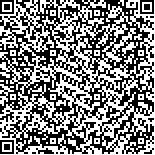陈卓,张英,王海燕,郑俊,廖维靖.重复经颅磁刺激联合镜像神经元训练系统对非痴呆性血管性认知障碍的影响[J].中华物理医学与康复杂志,2018,40(12):891-894
扫码阅读全文

|
| 重复经颅磁刺激联合镜像神经元训练系统对非痴呆性血管性认知障碍的影响 |
|
| |
| DOI: |
| 中文关键词: 非痴呆性血管性认知障碍 重复性经颅磁刺激 镜像神经元 |
| 英文关键词: Vascular cognitive impairment Transcranial magnetic stimulation Mirror neuron training |
| 基金项目: |
|
| 摘要点击次数: 6630 |
| 全文下载次数: 6421 |
| 中文摘要: |
| 目的 观察高频重复经颅磁刺激(rTMS)联合镜像神经元训练系统(MNS)对非痴呆性血管性认知障碍(VCIND)患者认知功能的影响。 方法 将33例VCIND患者随机分为rTMS+MNS组(n=17)和rTMS组(n=16),两组患者均给予常规康复治疗,rTMS+MNS组在此基础上叠加MNS治疗。rTMS治疗采用经颅磁刺激仪,刺激左侧前额叶背外侧区(DLPFC),刺激频率10Hz,刺激强度为90%静息运动阈值,治疗时间为每日1次/d,每周5d,连续治疗4周。治疗前及治疗4周后(治疗后),分别采用蒙特利尔认知评估量表(MoCA)、简易精神状态量表(MMSE)及改良Barthel指数(MBI)量表评定两组患者认知功能及日常生活活动能力改善情况,并记录两组患者事件相关诱发电位P300潜伏期及波幅。 结果 治疗后,2组患者MoCA、MMSE及MBI评分均较治疗前有所改善(P<0.05);。治疗后。rTMS+MNS组MoCA评分[(25.06±1.43)分]、MMSE评分[(25.71±1.69)分]及MBI评分[(74.71±5.44)分]亦优于rTMS组(P<0.05)。两组患者P300潜伏期均较治疗前缩短,波幅均较治疗前增加(P<0.05),且rTMS+MNS组P300潜伏期[(346.94±14.00)ms]短于rTMS组(P<0.05),波幅[(7.65±0.85)μv]则高于rTMS组(P<0.05)。 结论 rTMS联合MNS治疗能有效地改善VCIND患者认知功能,提高日常生活活动能力,可作为认知障碍的治疗策略之一。 |
| 英文摘要: |
| Objective To explore the effect of high-frequency, repeated transcranial magnetic stimulation (rTMS) together with mirror neuron training on the cognition of persons with vascular cognitive impairment but without dementia (VCIND). Methods Thirty-three persons with VCIND were randomly divided into an rTMS+MNS group (n=17) and an rTMS group (n=16) using a random number table. Both groups were given conventional rehabilitation training and rTMS over the left dorsolateral prefrontal cortex at 10 Hz, 2000 pulses per day at their individual motor thresholds on weekdays for 4 weeks using a CCY- I stimulator. The rTMS+MNS group was additionally given mirror neuron training. The Montreal cognitive assessment (MoCA), the mini-mental state examination (MMSE) and the modified Barthel Index (MBI) were administered before and after the treatment. The P300 latency and amplitude of both groups were also measured. Results Before the treatment, no significant differences were found in any of the measurements. After the treatment, the average MoCA, MMSE and MBI scores had increased significantly in both groups, with those of the rTMS+MNS group increasing significantly more than those of the rTMS group. After the treatment, the average P300 latency and amplitude of both groups were also significantly better than before the treatment. Compared with the rTMS group, the average P300 latency of the rTMS+MNS group was significantly shorter, while the average amplitude was significantly greater. Conclusion Mirror neuron training combined with rTMS is more effective than rTMS alone in improving the cognition and ADL performance of VCIND patients. It is worth applying in clinical practice. |
|
查看全文
查看/发表评论 下载PDF阅读器 |
| 关闭 |